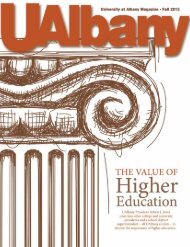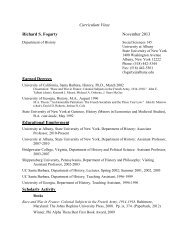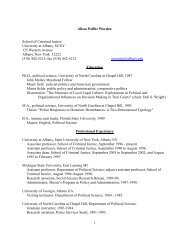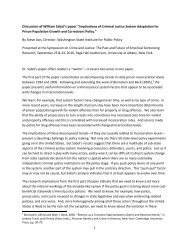Walking Corpses & Conscious Plants: Possibilist Ecologies in ...
Walking Corpses & Conscious Plants: Possibilist Ecologies in ...
Walking Corpses & Conscious Plants: Possibilist Ecologies in ...
You also want an ePaper? Increase the reach of your titles
YUMPU automatically turns print PDFs into web optimized ePapers that Google loves.
1<br />
Gillray, James. John Bull's Progress. 3 June 1793. Hand-Colored Etch<strong>in</strong>g. 11 7/8 <strong>in</strong>. x 14 7/8 <strong>in</strong>.<br />
(303 mm x 379 mm) paper size. Published by Hannah Humphrey. Purchased, 1947 by<br />
National Portrait Gallery, London.<br />
<br />
2<br />
Accord<strong>in</strong>g to Scott McCloud, “Whenever an artist <strong>in</strong>vents a new way to represent the <strong>in</strong>visible, there is always a chance<br />
that it will be picked up by other artists. If enough artists beg<strong>in</strong> us<strong>in</strong>g the symbol, it will enter the language for good—as<br />
many have through the years” (Understand<strong>in</strong>g 129). When visually construct<strong>in</strong>g a story, elements of dialogue and<br />
conversation certa<strong>in</strong>ly classify as <strong>in</strong>visible. For example, tim<strong>in</strong>g and delivery are difficult to convey merely through<br />
captions especially <strong>in</strong> cases where words are spoken simultaneously. Variations <strong>in</strong> font style and size can also illustrate<br />
tone, emphasiz<strong>in</strong>g particular phrases to convey changes <strong>in</strong> volume or other manners of speech. As techniques like<br />
speech balloons became commonplace, it became more easy to convey narratives depict<strong>in</strong>g the <strong>in</strong>terplay between<br />
various characters rather than ones structured upon scenes which condensed multiple series of actions or summaries <strong>in</strong>to<br />
s<strong>in</strong>gle images.<br />
3<br />
Accord<strong>in</strong>g to Amy Kiste Nyberg, “The notion of harm is at the core of many of the ethical questions raised about the<br />
mass media, both historically and <strong>in</strong> contemporary times. In the controversy over comic books, this harm is def<strong>in</strong>ed at<br />
two levels. First is the harm done to <strong>in</strong>dividual children and critics of comic books relied on anecdotal evidence of<br />
children who modeled their own behavior after actions depicted <strong>in</strong> their comics. Second is the harm done to society,<br />
s<strong>in</strong>ce comic books were implicated by some <strong>in</strong> the rise of juvenile del<strong>in</strong>quency <strong>in</strong> postwar America” (28).
















